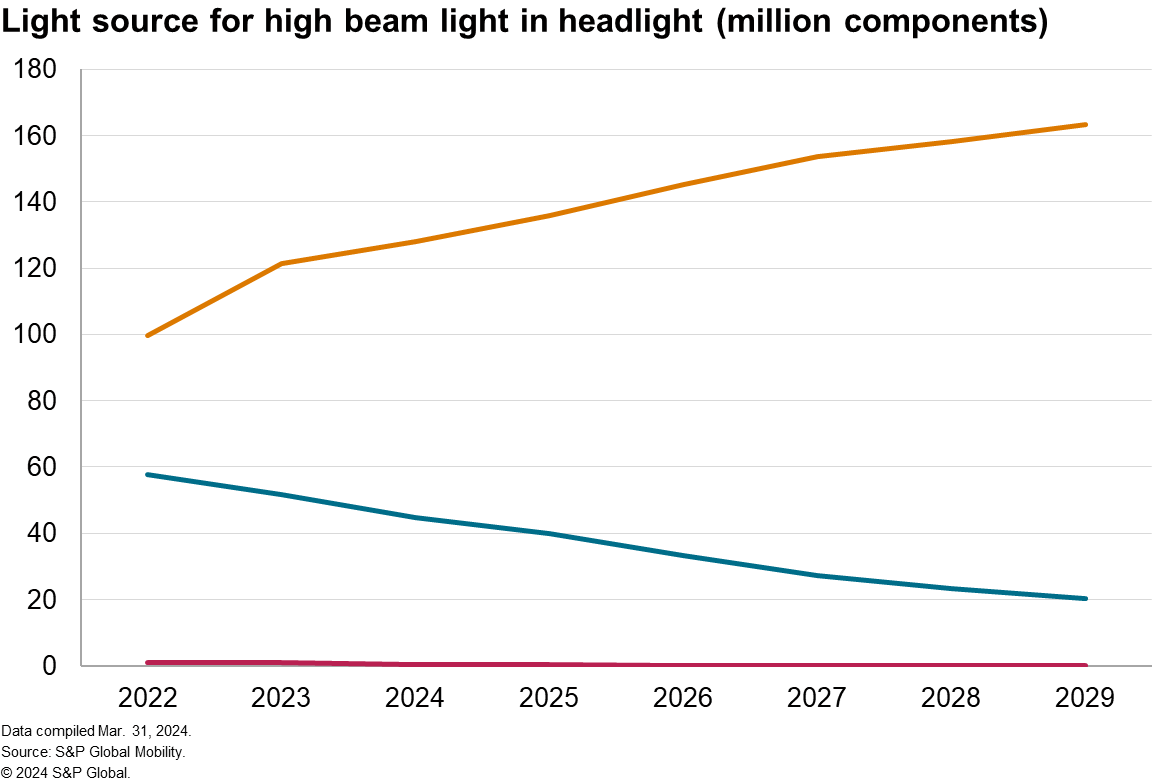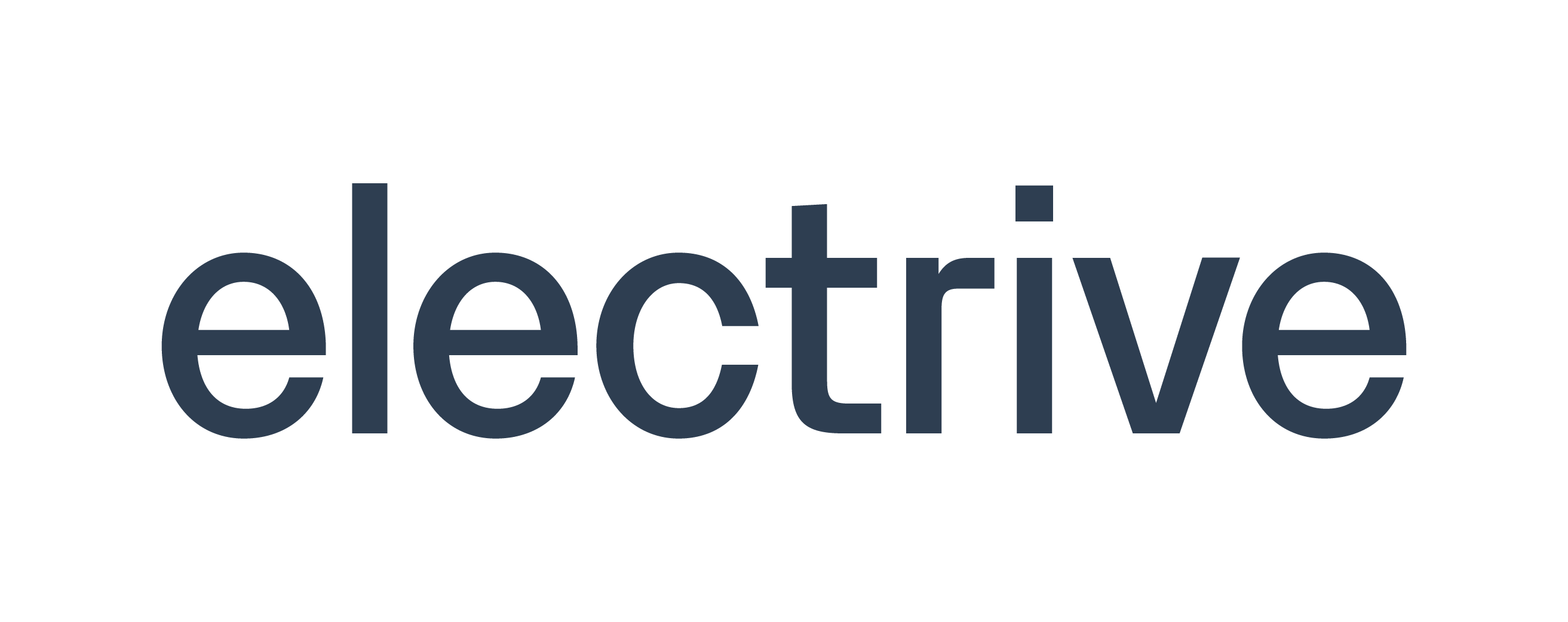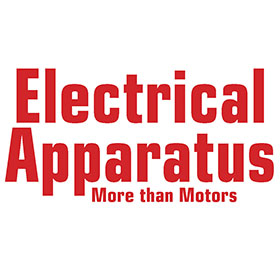Apart from helping in safer driving, front lighting is becoming a key design tool for automotive designers to design brand-specific or even model specific light signatures for their vehicles’ front
Front lighting in vehicles comprises of headlights, daytime running lights (DRLs), direction indicator lights and front fog lamps. Headlights were the first lights used in a vehicle’s front, with the critical task of illuminating the road environment to help drivers see clearly when driving during nighttime or when visibility is challenged during the day, owing to adverse weather.
Over the years, automakers have introduced other front-lighting systems in vehicles that contributed to safer driving. For example, direction indicator lights, offered both in the front and in the rear of a vehicle, allow drivers to inform other road users about their intention to change lanes or to turn left or right at the next traffic signal. Front fog lamps offer drivers additional illumination of the road in dense fog when conventional low- and high-beam lights are not sufficient or effective. DRLs help an equipped vehicle get noticed by other drivers during the day when visibility is compromised owing to adverse weather or when the vehicle is passing through a tunnel.
Lately, automakers have started equipping vehicles with new exterior illumination systems mainly for styling. The three exterior illumination solutions that automakers are offering in their vehicles’ front are front light bars, illuminated grilles and illuminated logo. The front light bar appears to be connecting the two DRLs or DRL-integrated headlamps to offer end-to-end lighting. Light bars were first introduced in a vehicle’s rear; however, this feature is becoming popular in the front as well.
Automakers have started illuminating the radiator grille area in the front bumper, which has traditionally been used in internal combustion engine (ICE) vehicles to let out exhaust air. This feature is expected to become popular in battery-electric vehicles (BEVs), which do not come equipped with engines and therefore do not require a conventional radiator. This makes the entire front bumper area of the vehicles available for decoration with emblems or logos. The illuminated emblem or logo functions like a normal chrome logo during the day but glows with a low-intensity white LED light during the night.
Key trends in front lighting
LED dominance as a preferred light source: The most visible trend in automotive — front, rear and interior — is the growing use of LEDs as a preferred light source over halogen and xenon bulbs. The LED was already used in rear lighting for nearly two decades before it debuted in front lighting. Audi was the first carmaker to introduce LED DRLs in the 2004 A4. In headlights, LEDs were first used as a light source for low-beam lights (Lexus LS 600h) in 2006. Two years later, Audi became the first carmaker to debut all-LED headlights in the A8.
Today, the LED is rapidly replacing halogen bulbs and xenon bulbs as the preferred light source in headlights, DRLs, direction indicator lights and front fog lamps. Automakers are also using LEDs as a light source for new exterior illumination solutions.


Despite the rising share of LEDs as a light source in headlights and other lights, lighting suppliers continue to look for new light sources that can deliver more energy-efficient light and illuminate the road at a longer range, in the case of headlights. Longer range provides drivers with some extra seconds to act swiftly in the event that something appears in front of the vehicle.
Some automakers are offering laser lights in headlights, which can illuminate the road up to 600 meters, nearly double compared to the most advanced LED. However, the laser light is not used as a light source but to complement LEDs to get longer visibility range. In such headlights, laser lights become active at certain driving speeds (70 kilometers per hour).
Automakers have started offering new headlights that use microLEDs as a light source. MicroLEDs are significantly smaller compared with conventional LEDs, allowing lighting companies to use several thousand microLEDs in each headlight to offer high-resolution illumination.
Adaptive headlights for glare-free illumination: Use of more advanced light sources in headlights have increased the risk of glaring other road users, including pedestrians, cyclists and drivers of oncoming and preceding vehicles. Glaring has become one of the key reasons for an increase in road accidents during nighttime.
To deal with the challenge of glaring, automakers are equipping their vehicles with adaptive headlights, which intelligently controls distribution of high-beam and low-beam light. Three most widely used adaptive headlights are the automatic high beam (AHB), adaptive front-lighting systems (AFS) and the adaptive driving beam (ADB).
As the name suggests, AHB headlights automatically switch from high-beam to low-beam light when the system detects the presence of a vehicle in its driving range. The headlights return to high-beam light once the detected vehicle is no longer within the driving range of the equipped vehicle. The AHB system counts on the inputs from a forward-facing camera, and it becomes active at certain driving speeds.
AFS headlights adjust the light distribution according to predefined driving conditions, such as when turning at a corner or when driving on a curved road. Such headlights use bending lights, also called cornering lights, to increase the horizontal area illuminated by the headlights when turning a corner.
The bending lights could be fixed or dynamic. Fixed bending lights use an additional light source or reflectors in the headlamp to direct the light to the vehicle’s turning direction. Dynamic bending lights count on a light module that directs the beam pattern to offer more flexible lighting. Next-generation AFS offer predetermined road illumination depending on the types of roads (country, town or highway) and weather (wet road) conditions.
ADB headlights help drivers to drive their vehicles on high-beam light all the time, without glaring other road users. The system relies on inputs from a front camera and/or sensors to partially turn off the high-beam lights to prevent glaring.
LEDs have played a key role in the success of ADB headlights. Such headlights feature hundreds or thousands of LED segments or pixels (in each headlight), arranged in multiple discrete rows like a matrix. The ADB system can individually turn on and turn off these LEDs to prevent glaring other road users while still illuminating the remaining areas for the drivers to drive their vehicles. Apart from LEDs, automakers have now started using microLEDs to deliver glare-free highly digitized (HD) road illuminations.
In addition to the HD quality of road illuminations, next-generation digital headlights support various driver assist and communication functions. This includes the welcome and goodbye light sequence, the lane light and orientation light, as well as the projection of the brand, logo and navigation guidance (including) warnings right in front of the vehicle.

Lighting as a design tool: Lighting is the new chrome in vehicles. It has become one of the most effective tools for automotive designers to design the front look of new vehicles. Automotive designers are using headlights and DRLs, as well as new exterior illumination solutions such as the light bar, illuminated grille and lit logo, in creating new light signatures that give a unique identity to the equipped vehicles.
Some of the key design trends in front lighting include:
- Slimmer headlights:Automakers are offering new vehicles with slimmer and sharper headlights, thanks to the growing use of more compact light sources (LEDs and microLEDs) and more advanced optical technologies. The trend is more visible in luxury vehicles. However, even less expensive, mass- market vehicles are coming with compact headlights.
- DRLs are becoming prominent:Some automakers are deliberately making DRLs prominent in their new models while concealing the main headlamp (high-beam light and low-beam light) through shadowing. In such vehicles, DRLs glow all the time when the vehicle is switched on and moving but headlights become active only when used for illumination.
- Identical light signatures in the front and rear:Some automakers offer identical light signatures in the front and rear of their vehicles. This can be achieved using similar designs for DRLs in the front and in the tail-function light in the rear, or by using a light bar of similar length and thickness (obviously different color) in the front and rear.
- Lighting for branding:Some carmakers are using exterior lighting for reinforcing their branding. They are subtly integrating their logo or brand name in the design of certain lights such as the DRLs and front light bars.
- Lighting for communication:Lighting offers potential for use as a tool for dynamic communication. For example, electric vehicles are using DRLs or front light bars to show charging progress when the vehicle is plugged in for charging.
Thus, traditional front lights in vehicles, such as headlights, DRLs, direction indicator lights and front fog lights, have become more efficient in performing their assigned tasks to ensure safer driving. However, automakers are increasingly using these front lights, along with new exterior illumination solutions, to design the brand- or model-specific front looks of their vehicles. In addition, lighting offers tremendous potential for use as a key marketing and communication tool. In future, autonomous vehicles can use front lights to communicate with other road users about their driving intentions, including when they are slowing down, fully stopping or ready to accelerate, as well as to inform pedestrians when it is safe to cross the road.
Author:

Om Sharma, Principal Research Analyst, S&P Global Mobility
For more information please click here




















